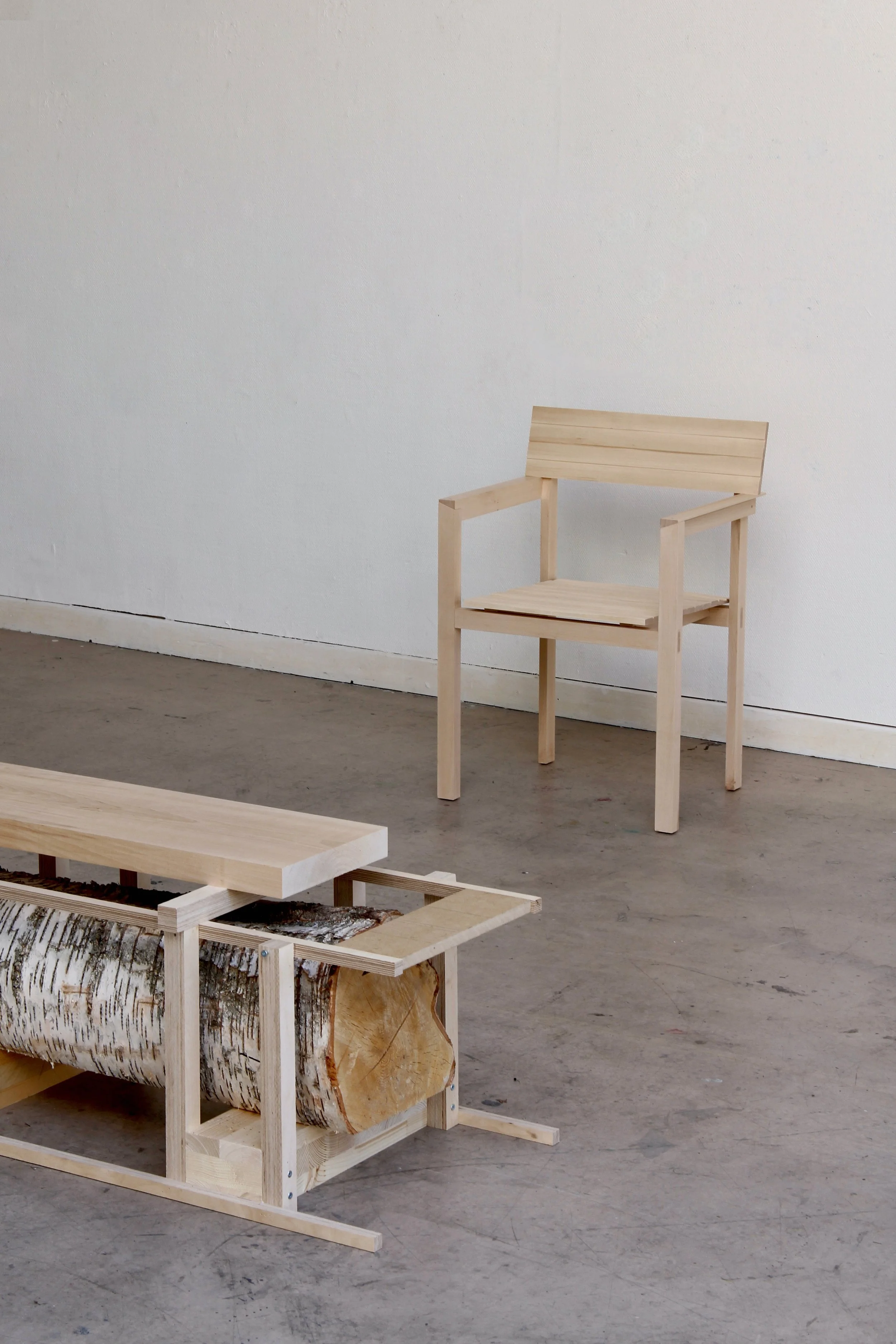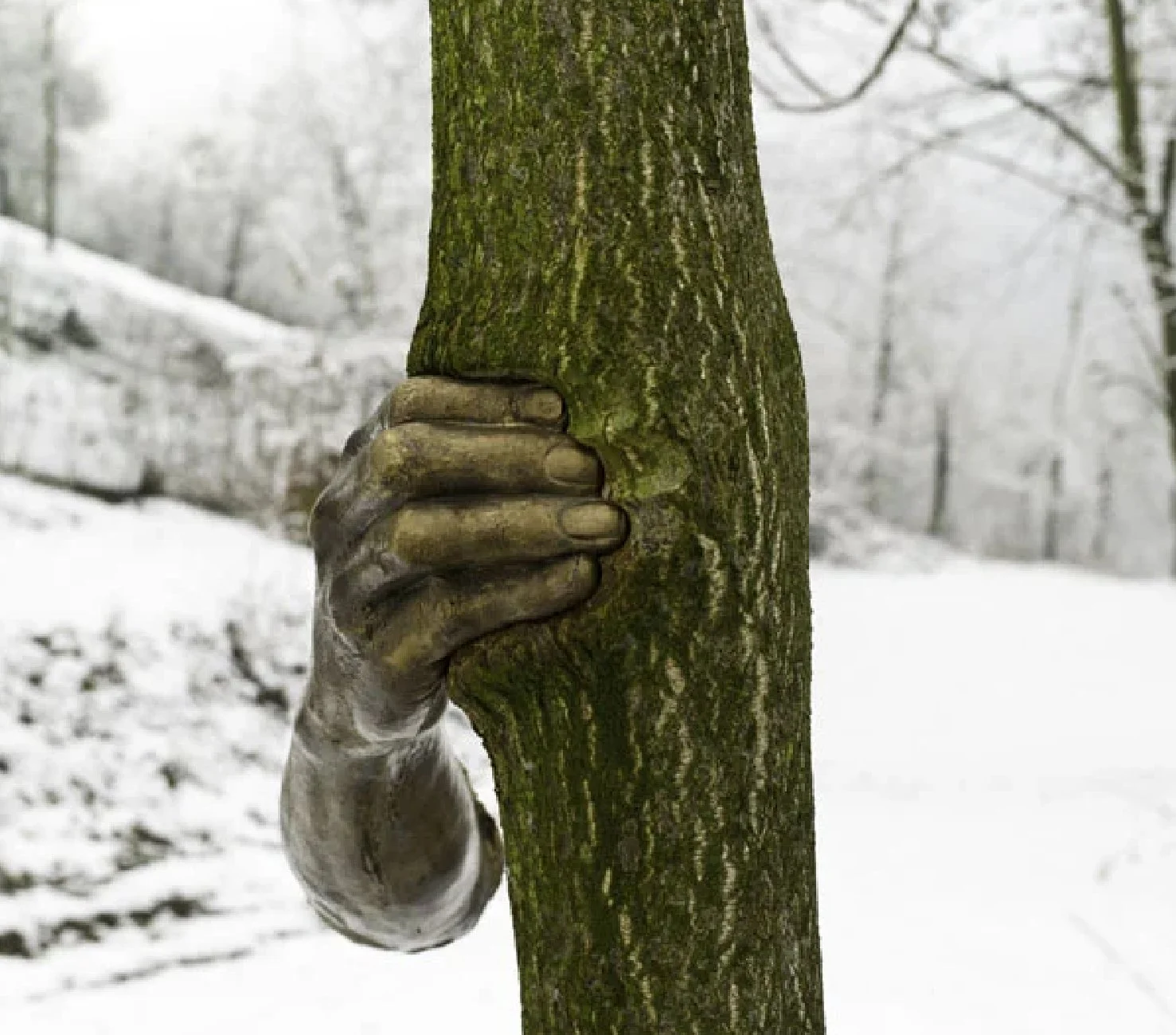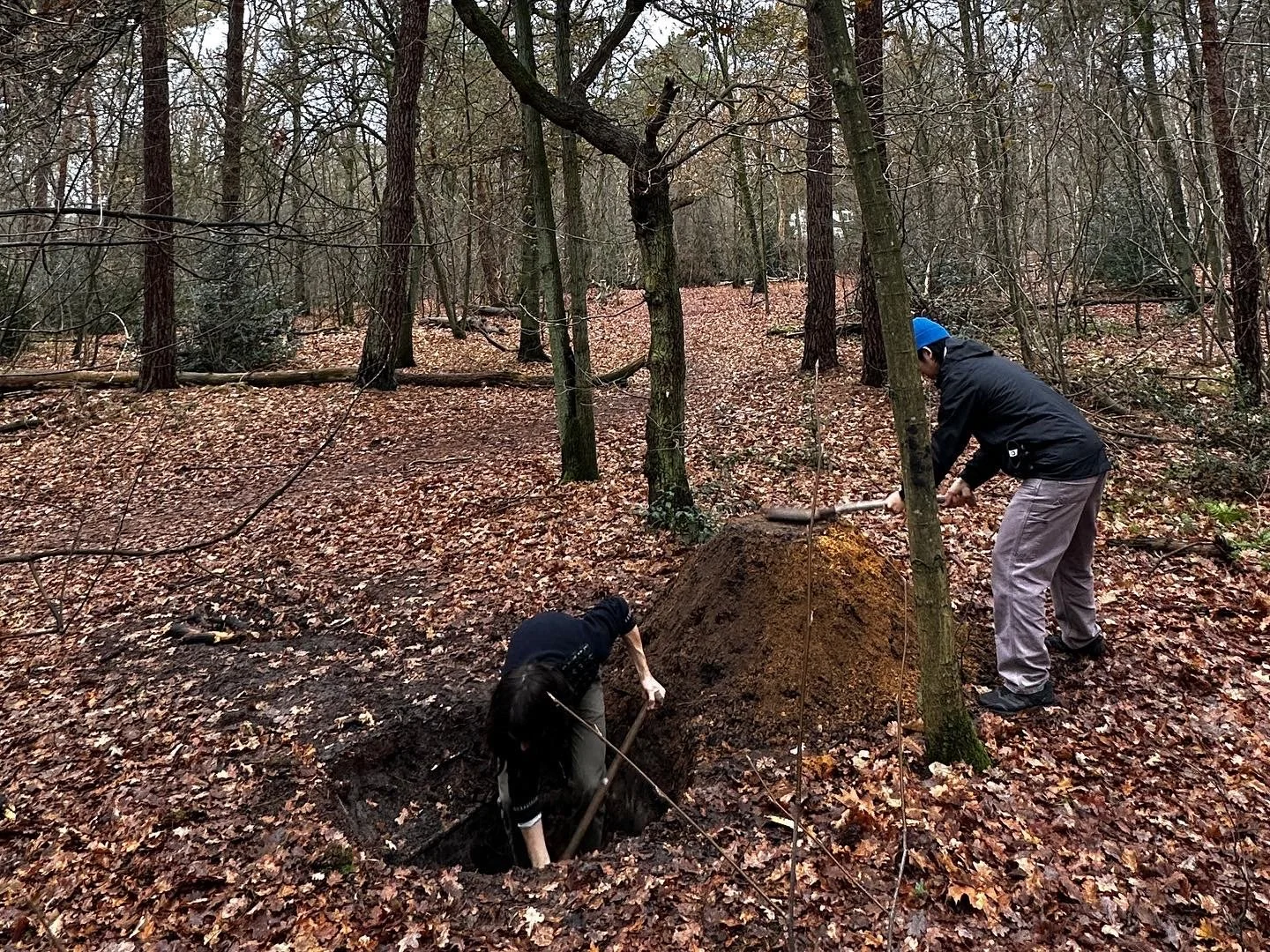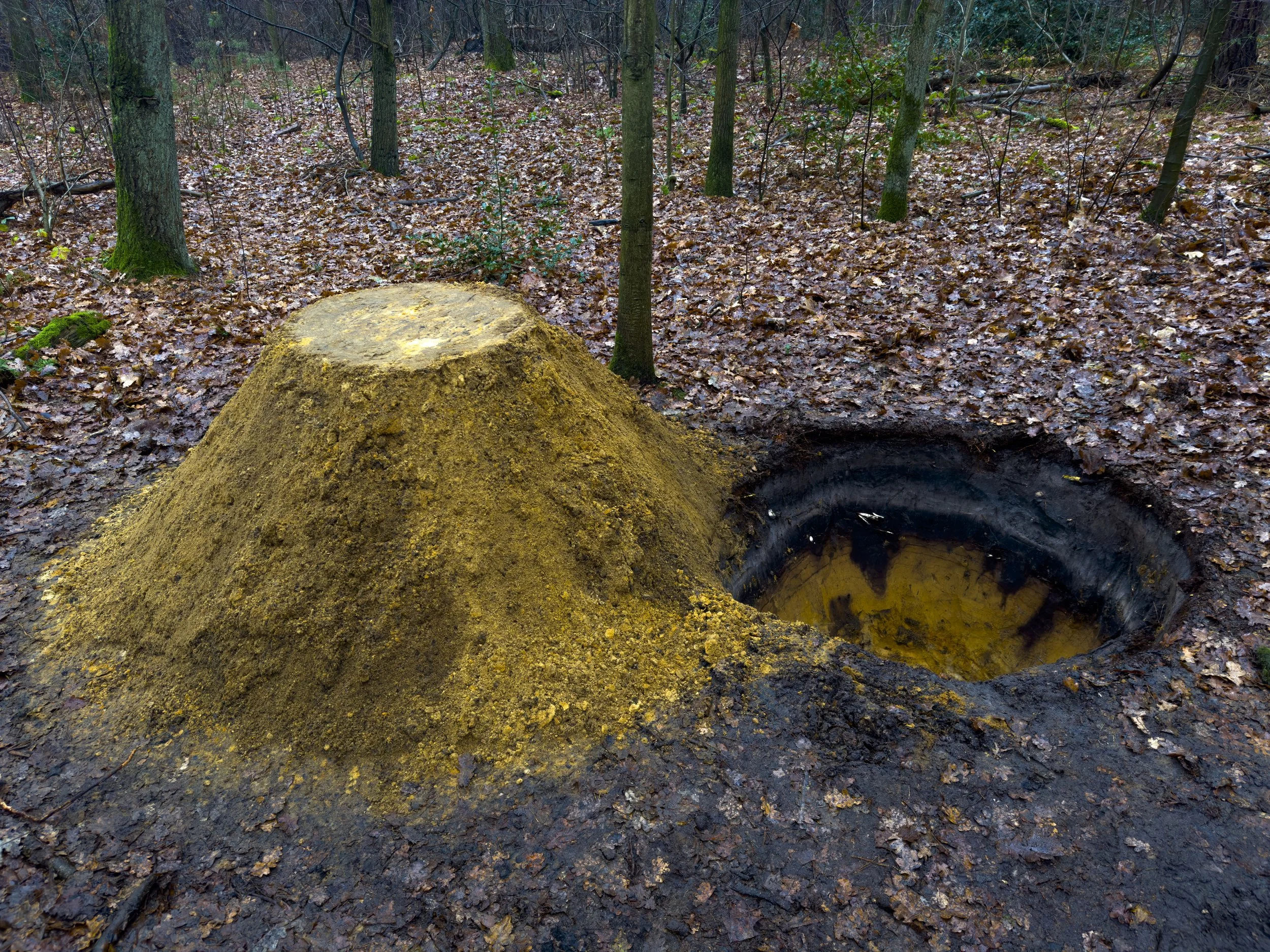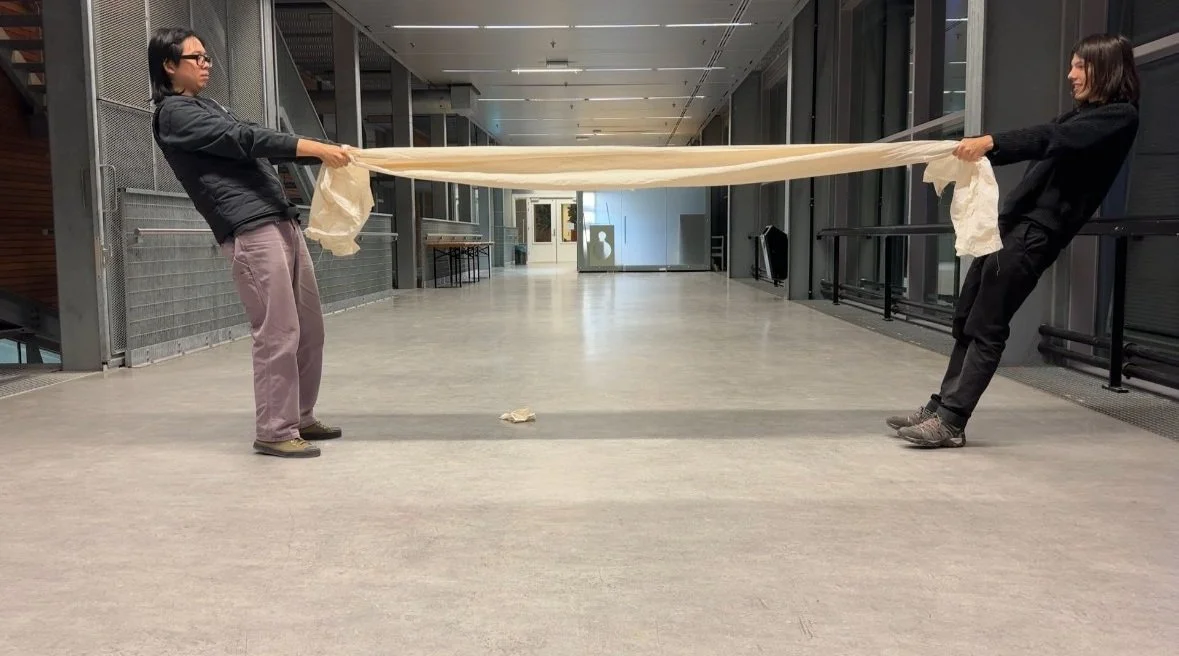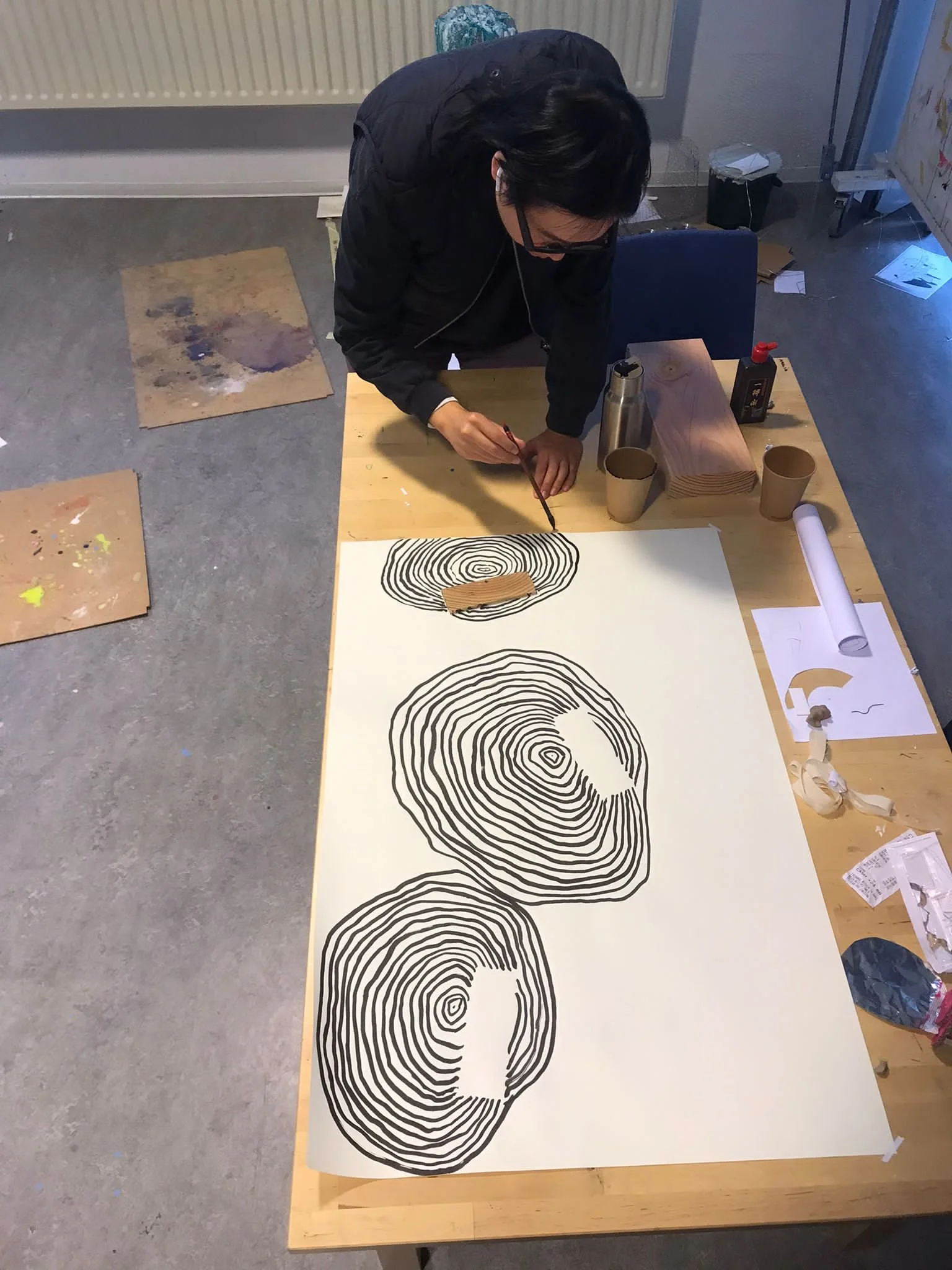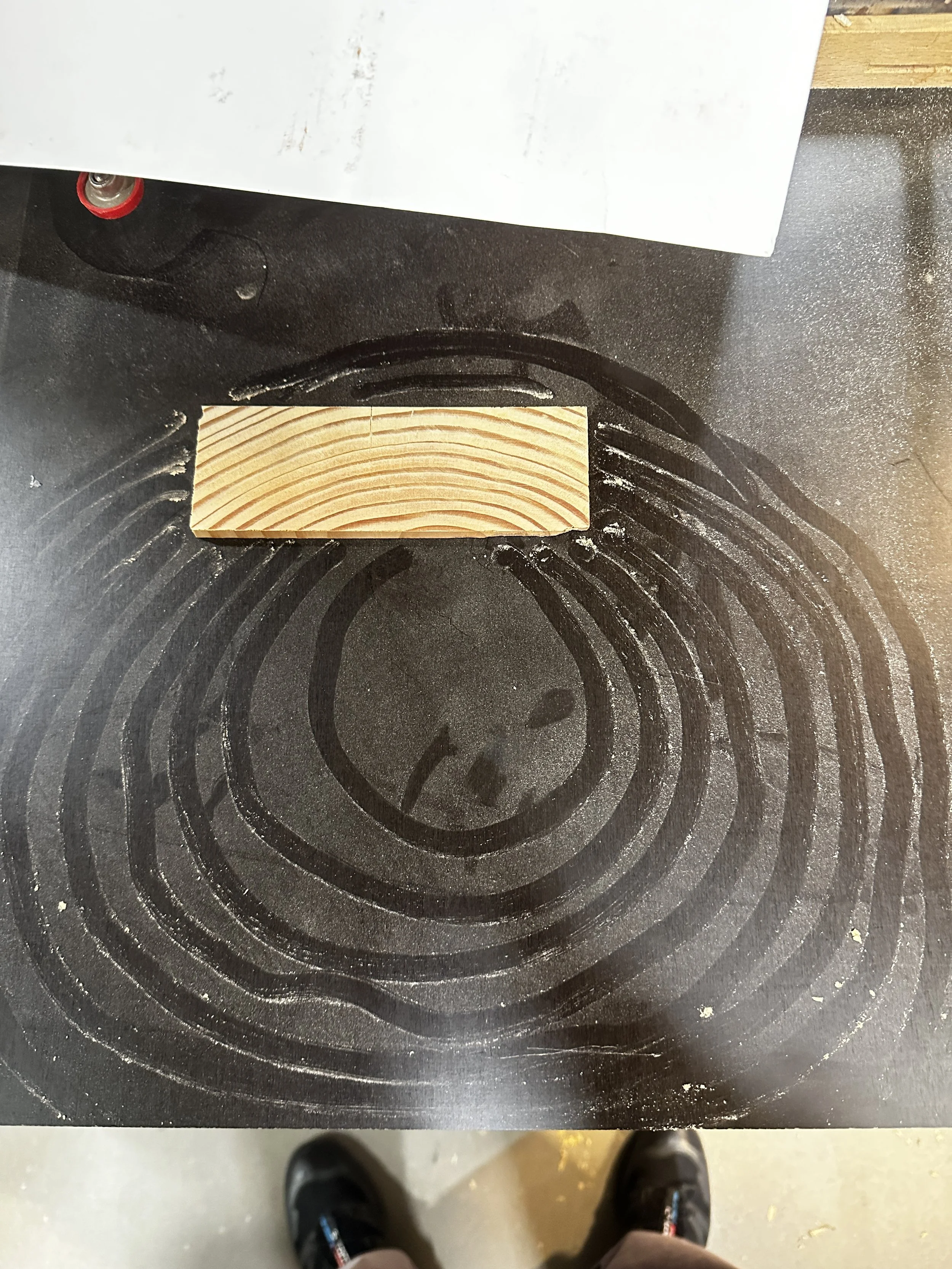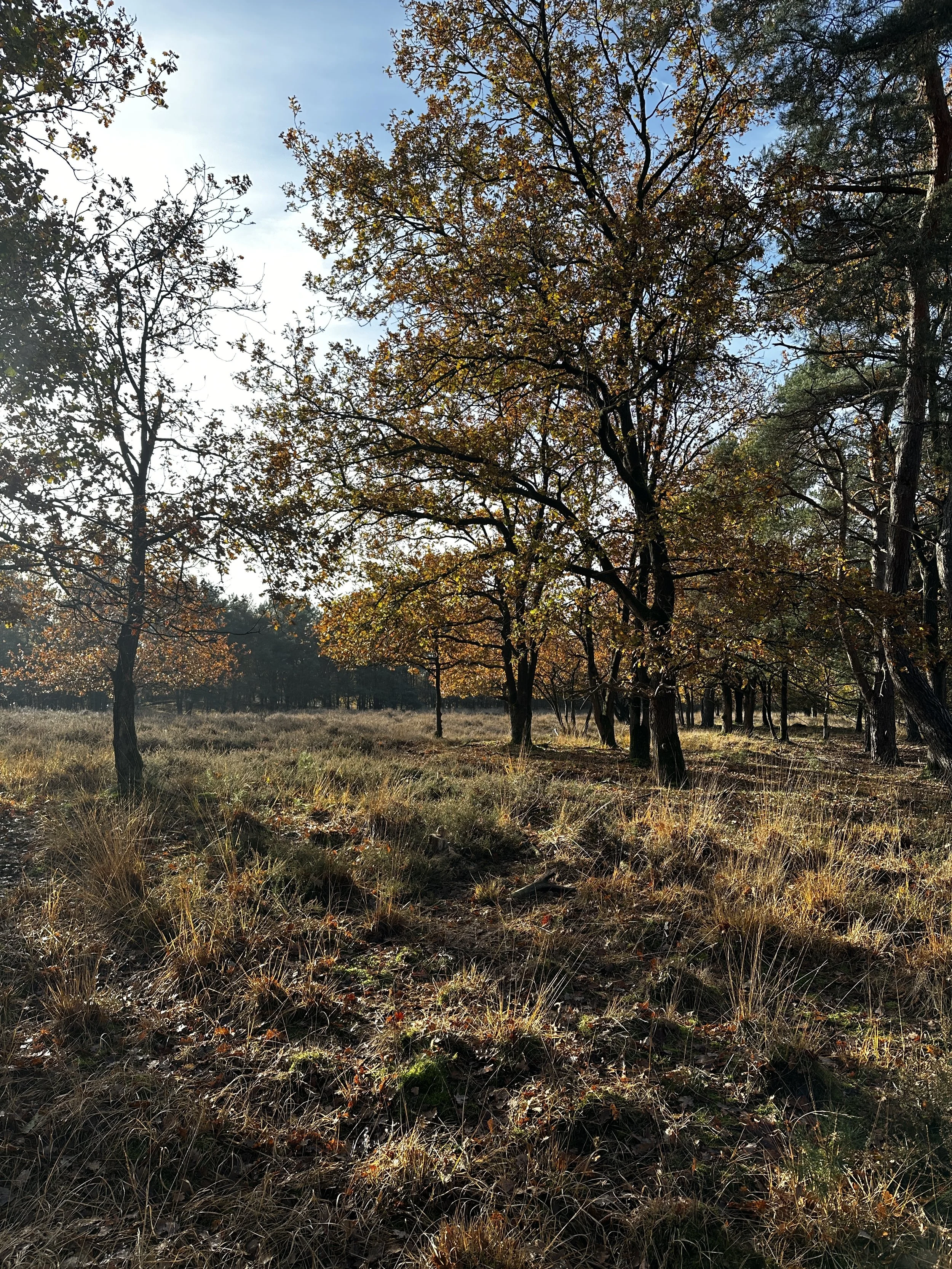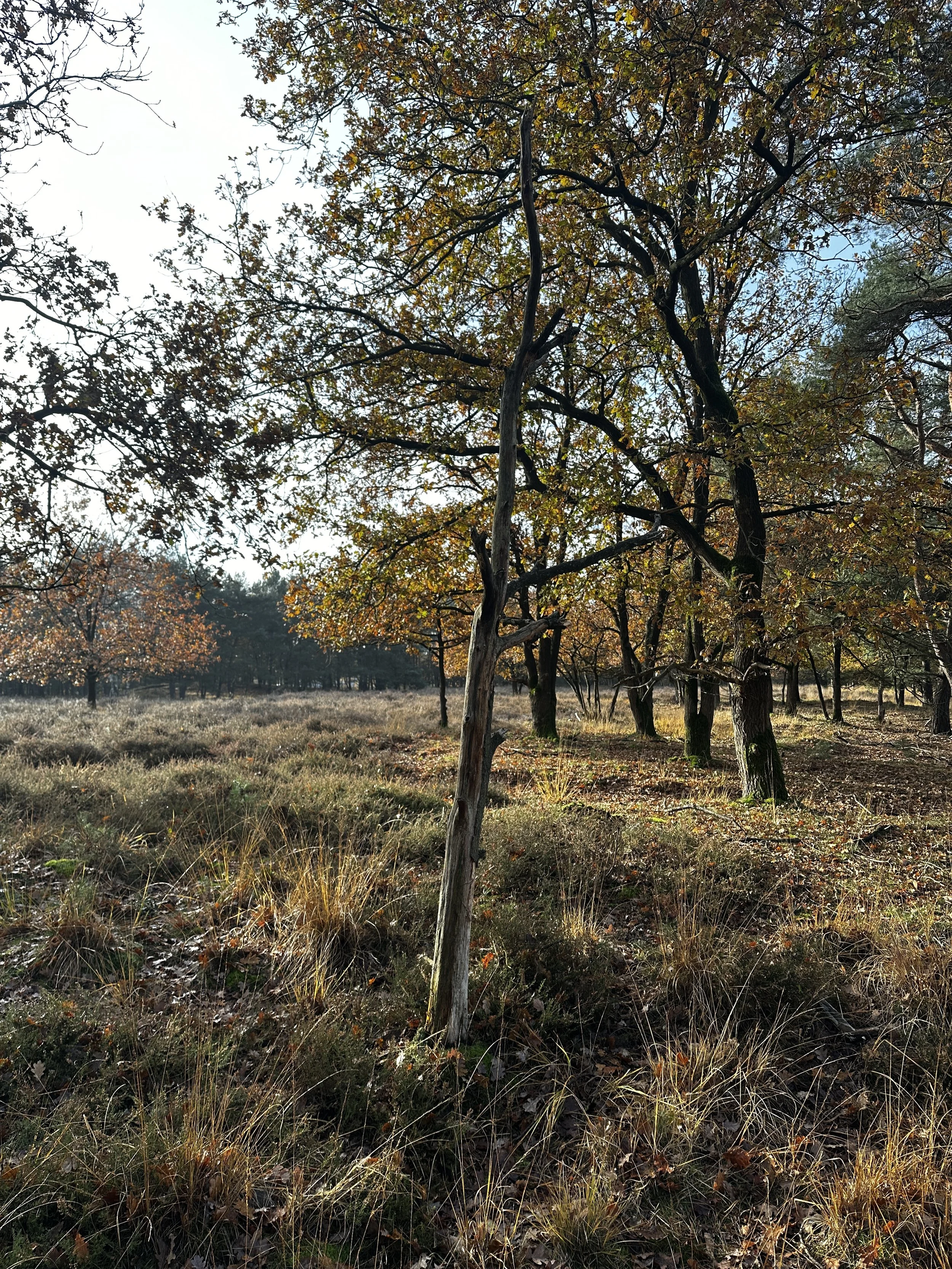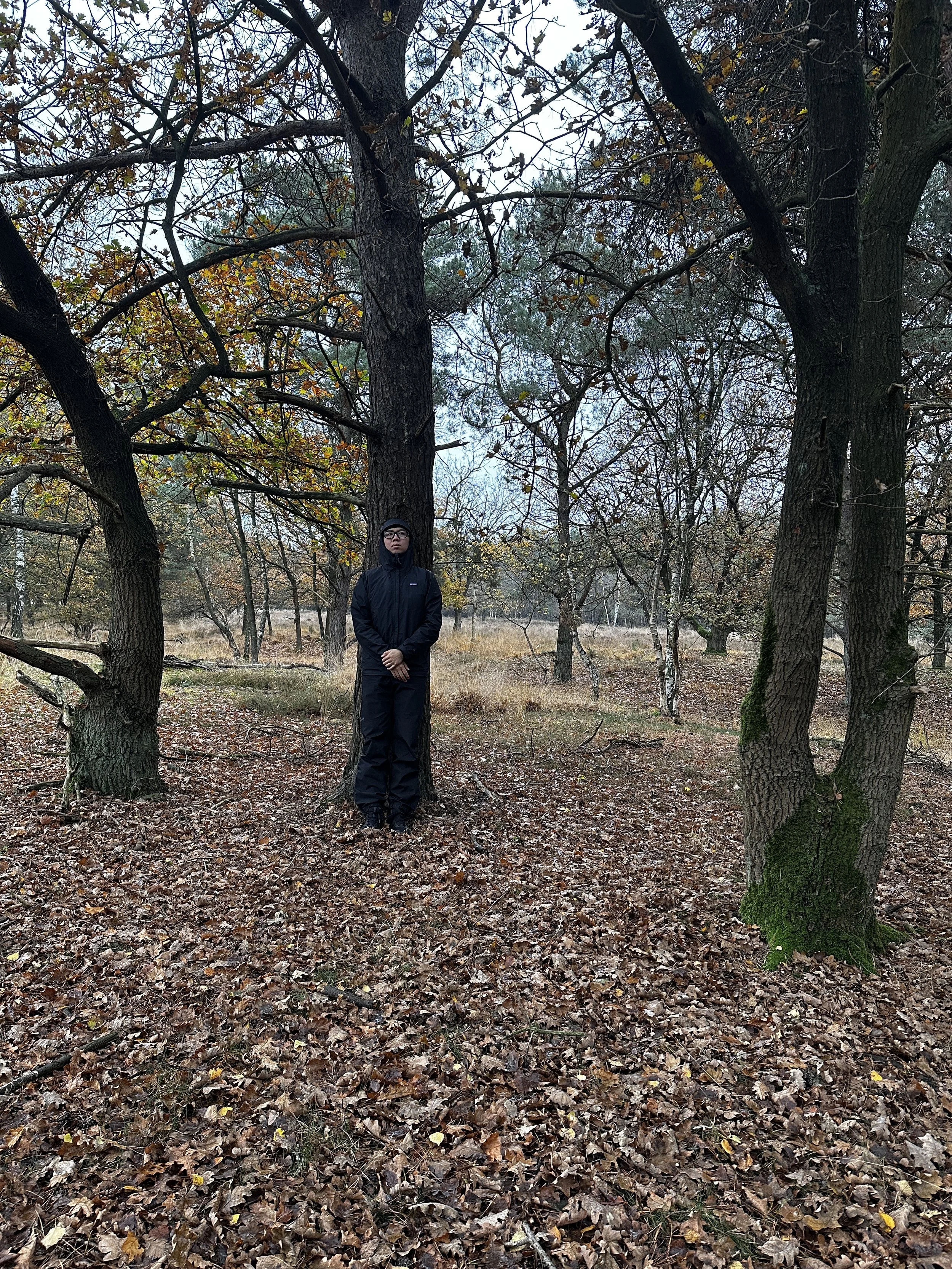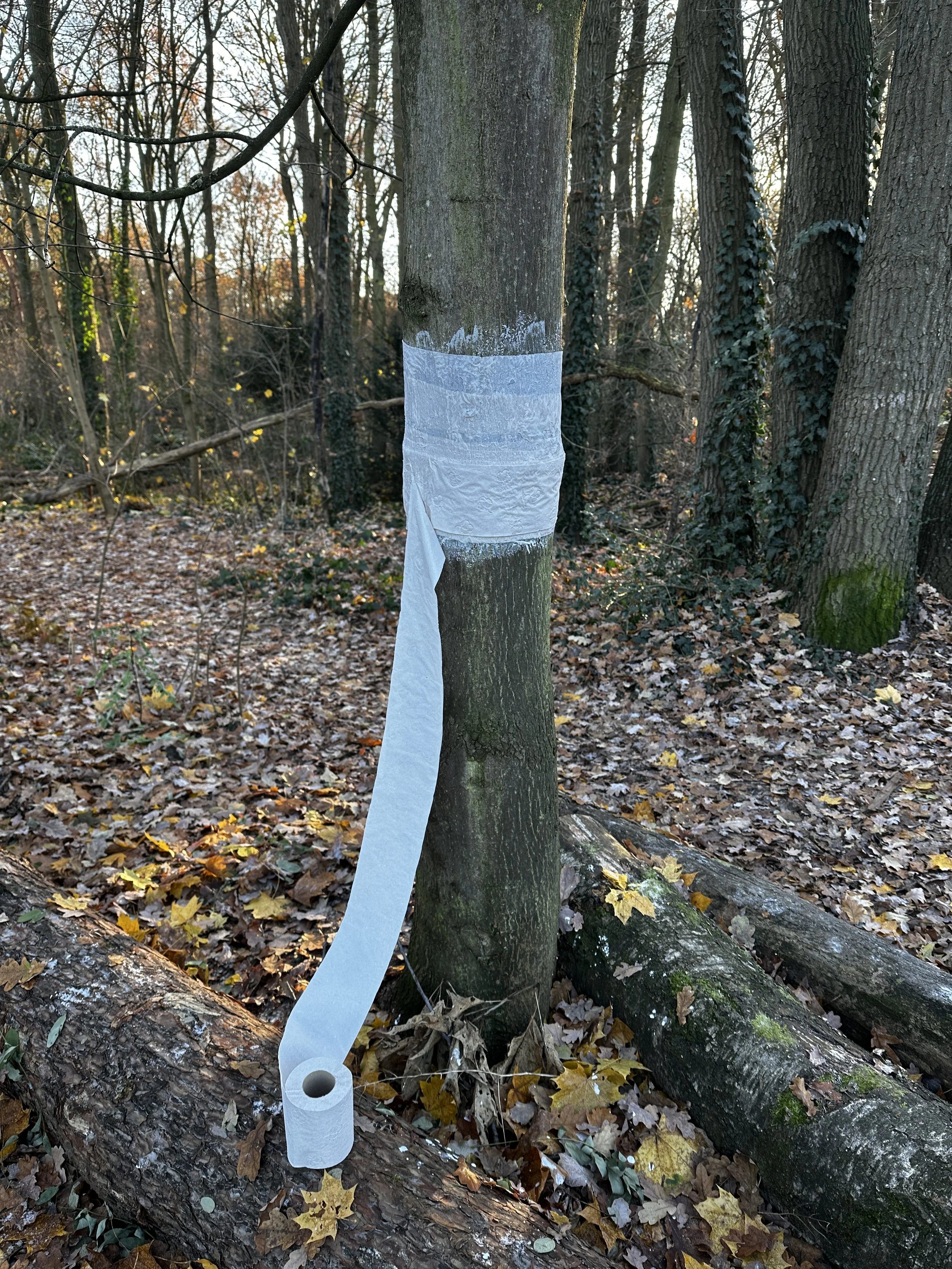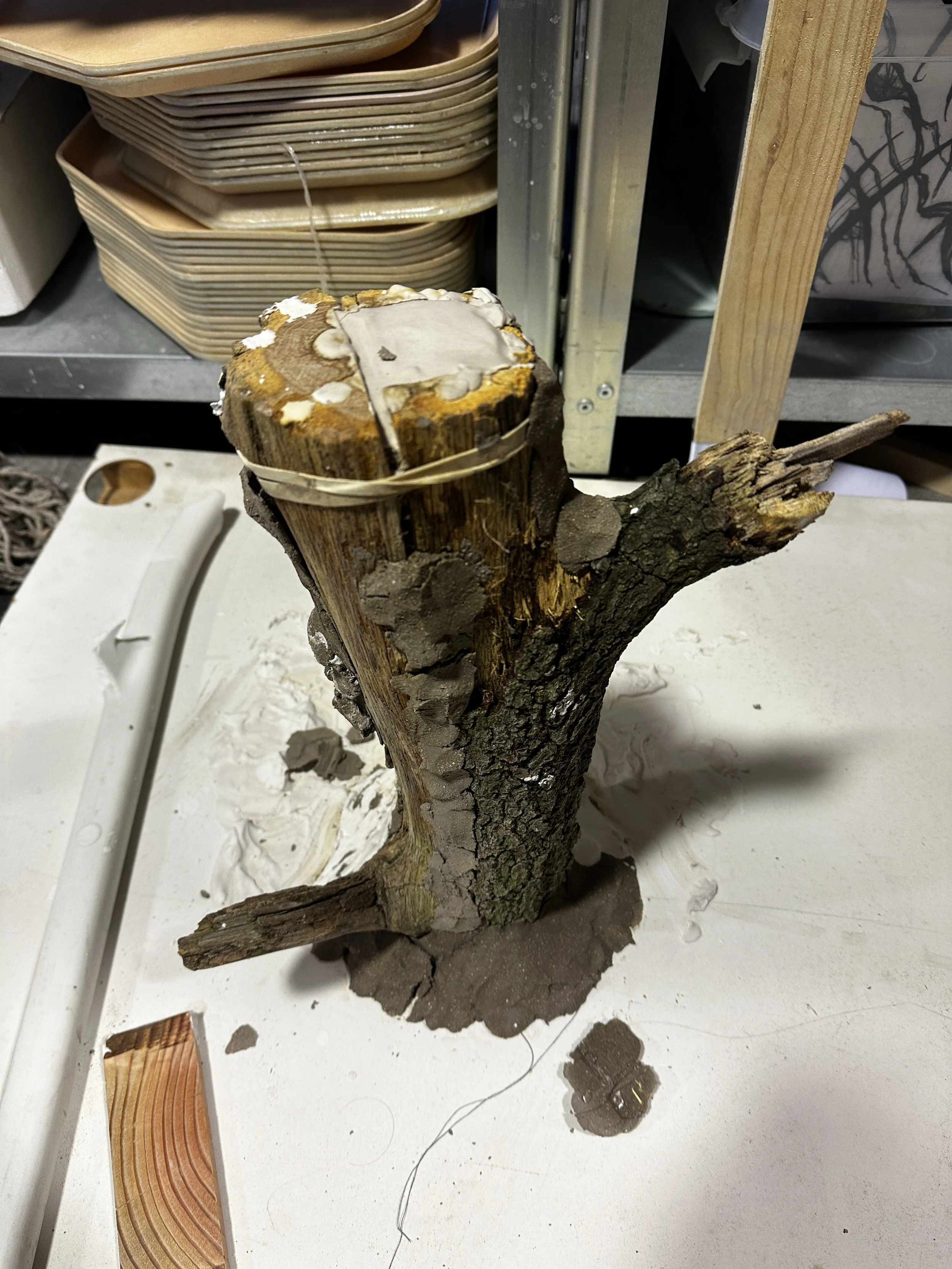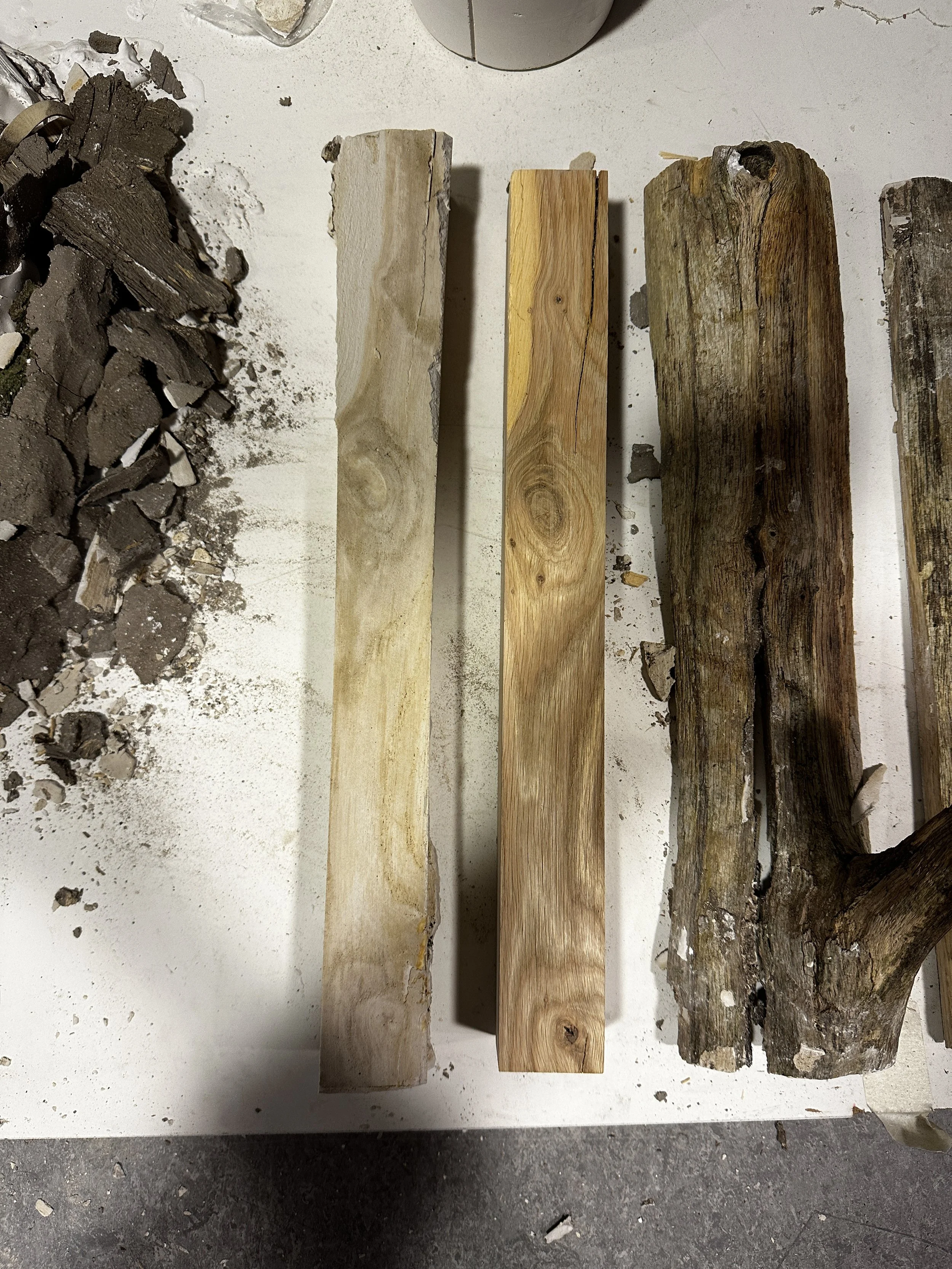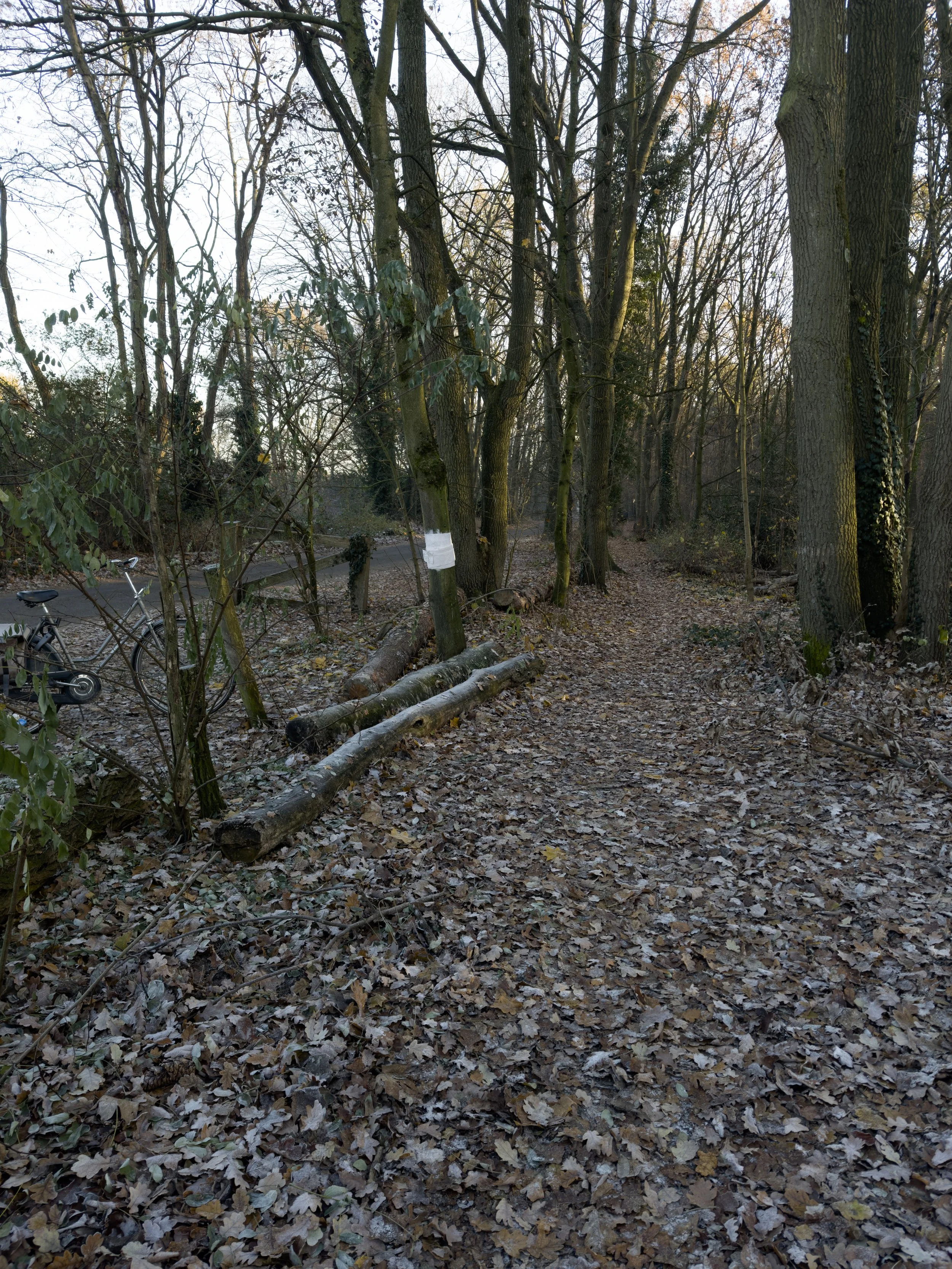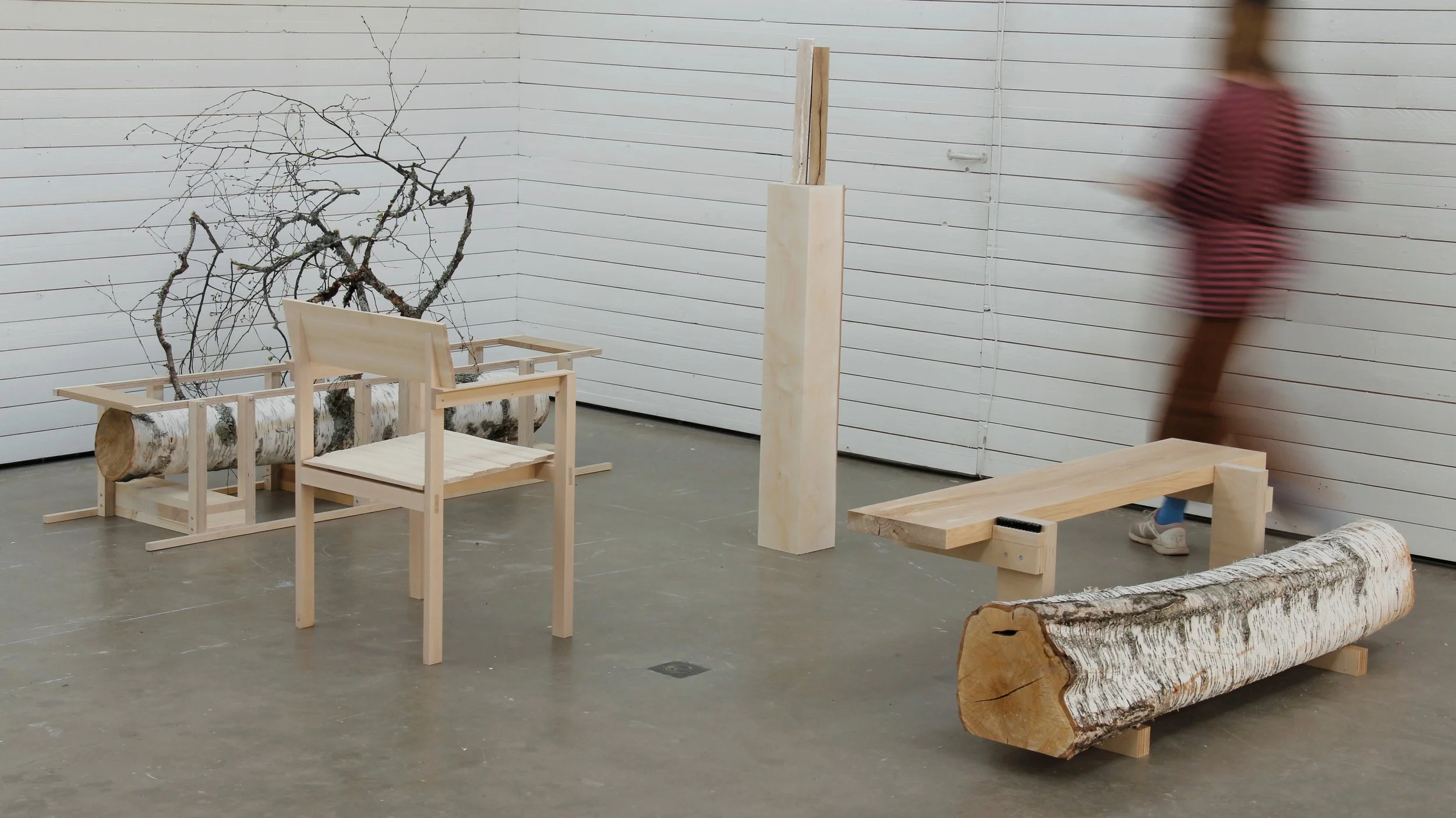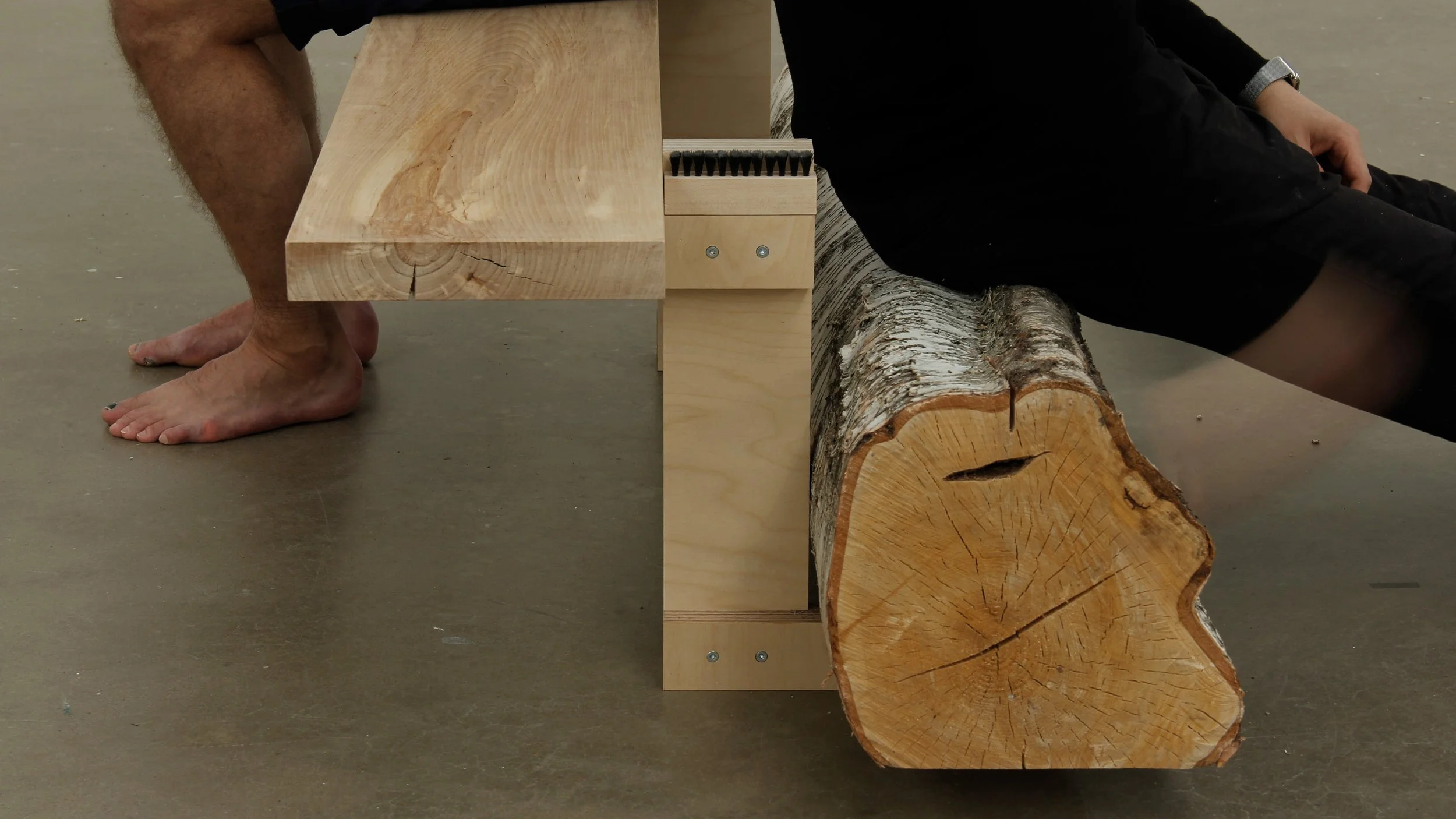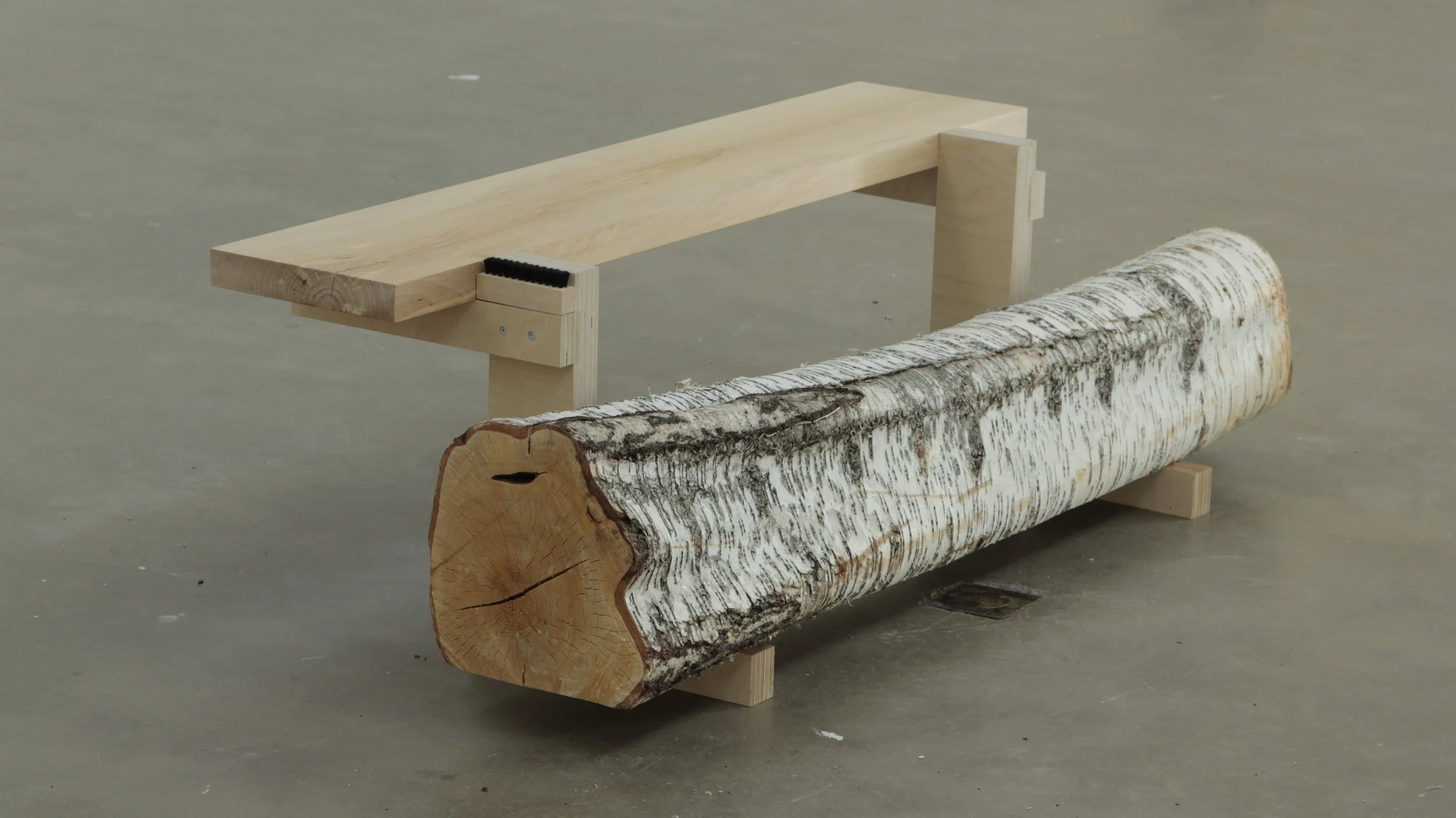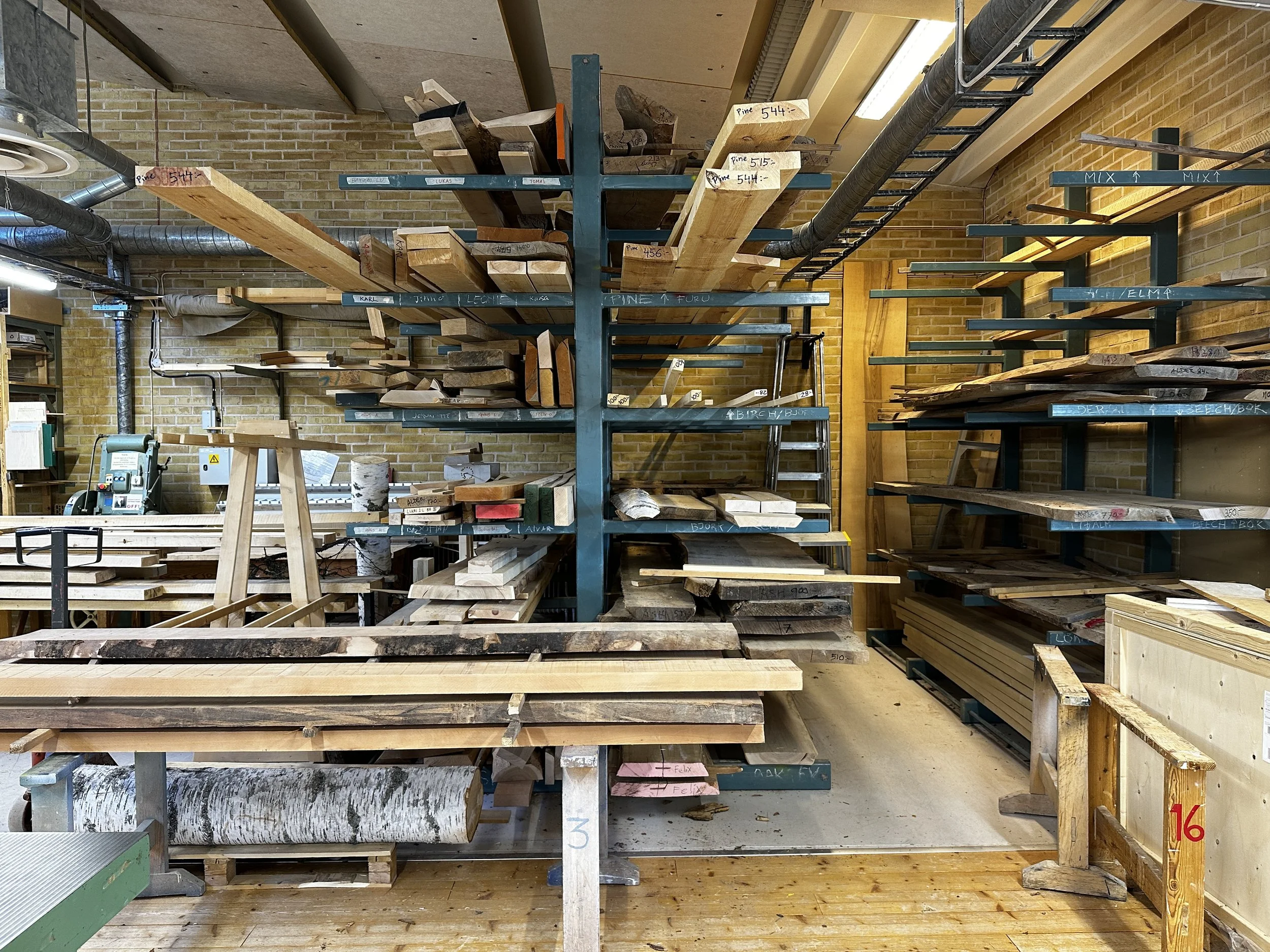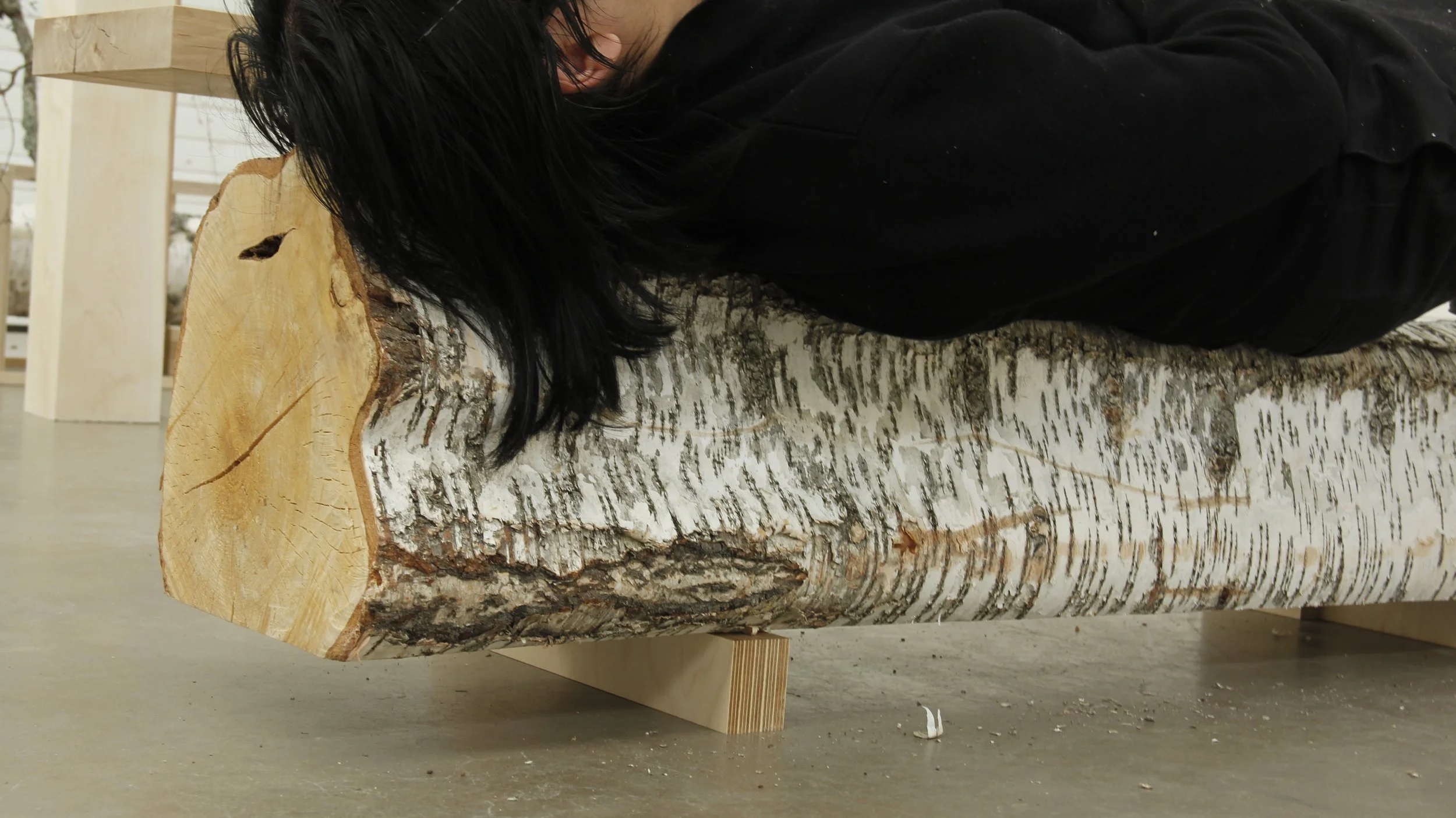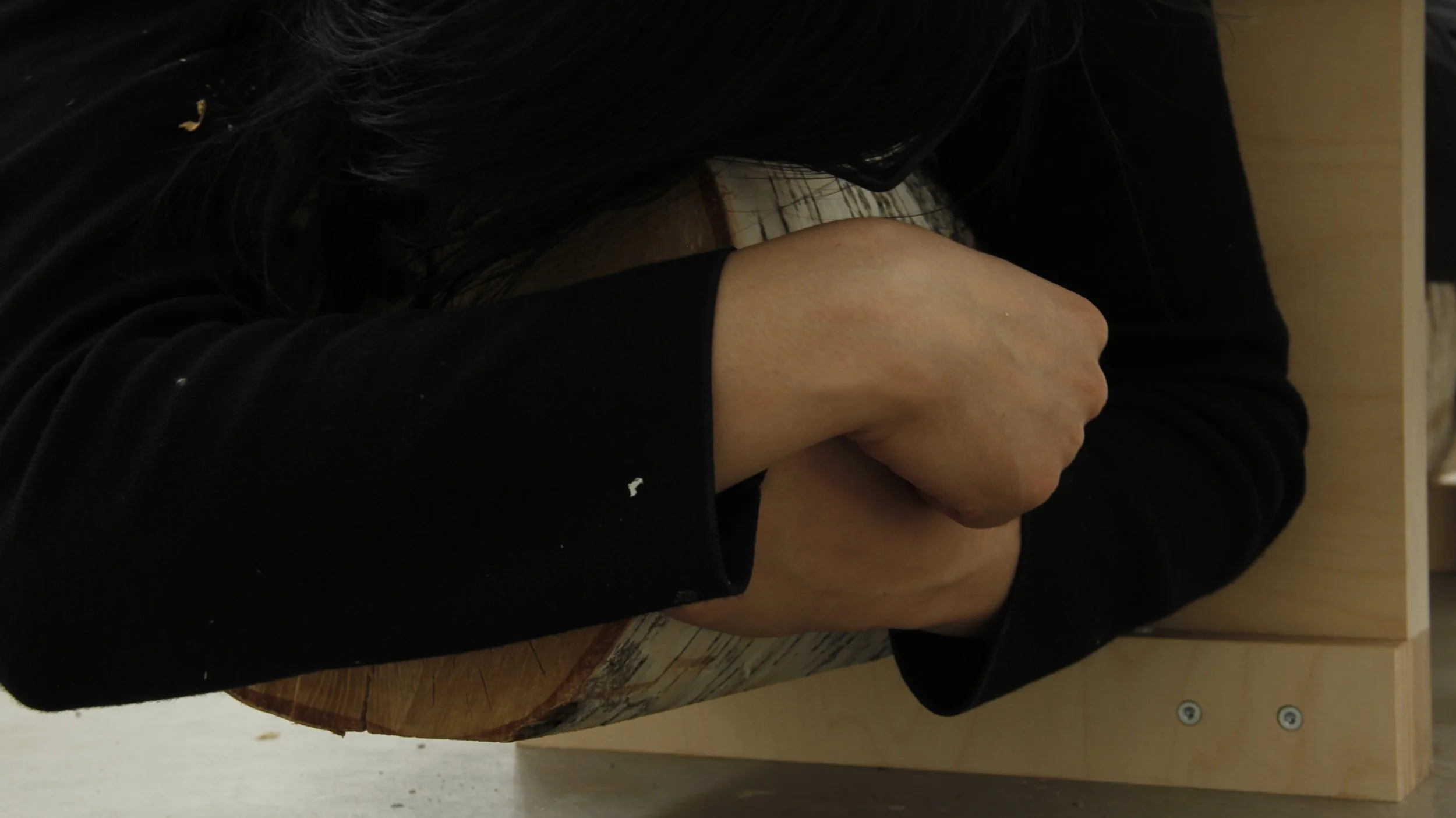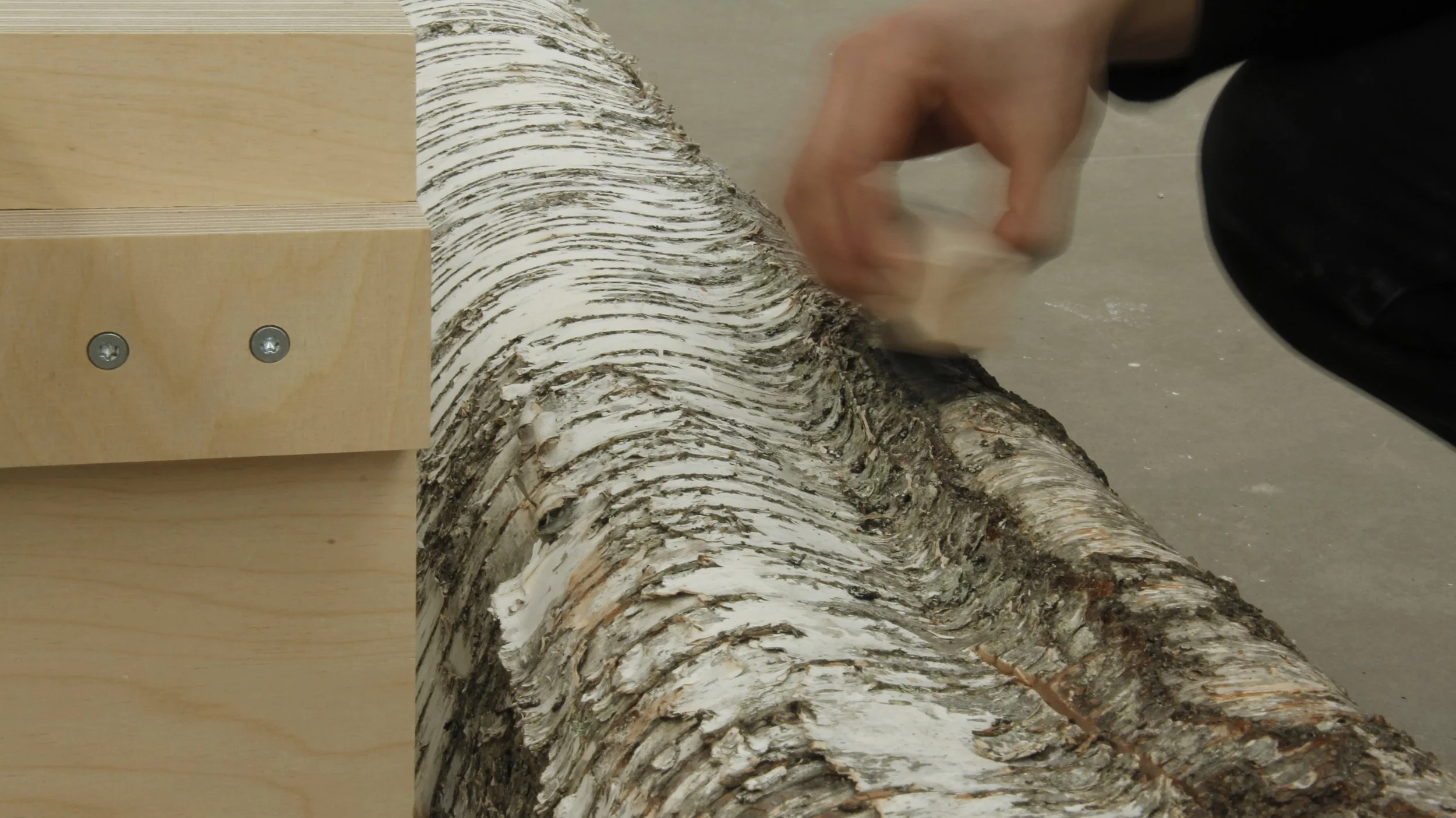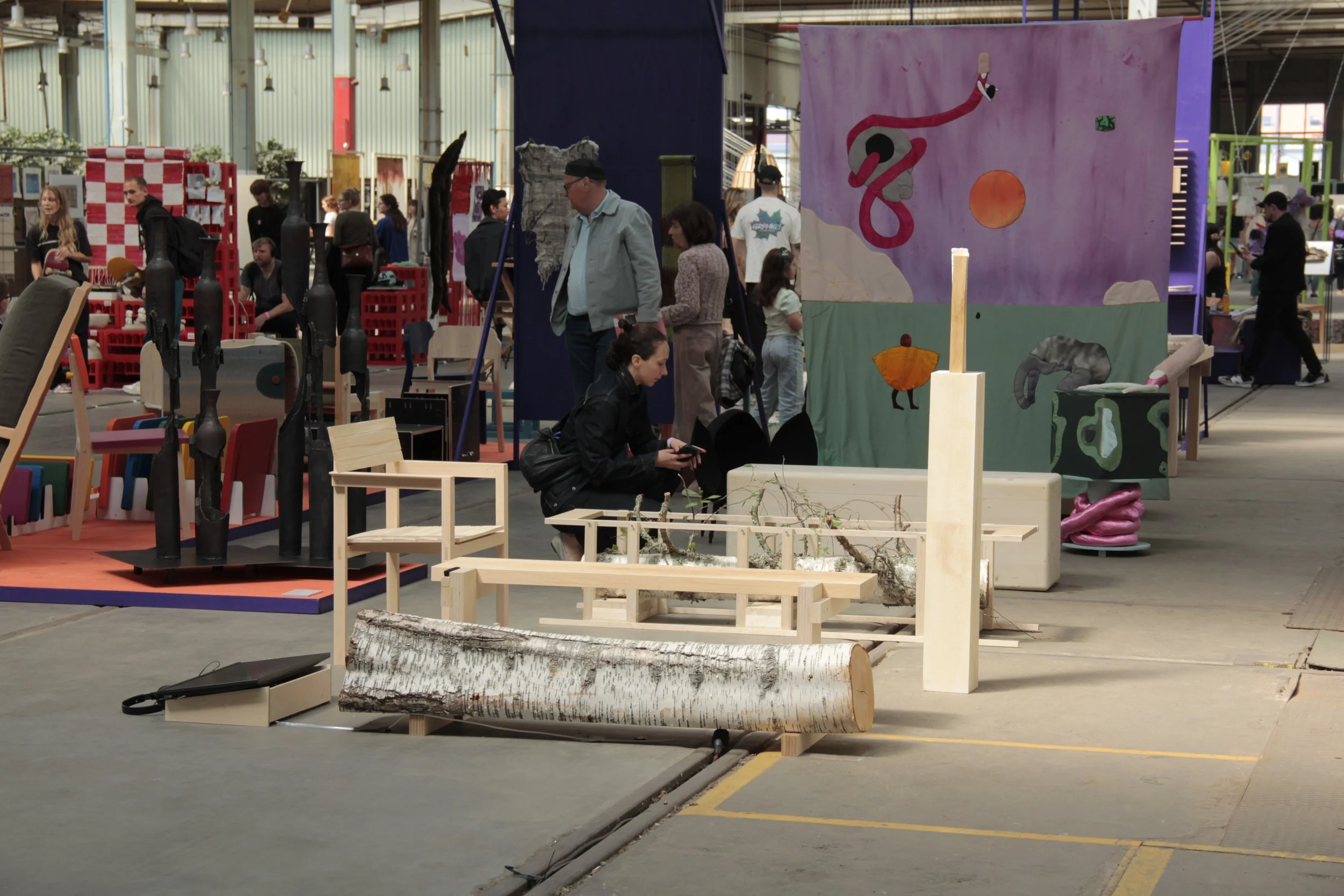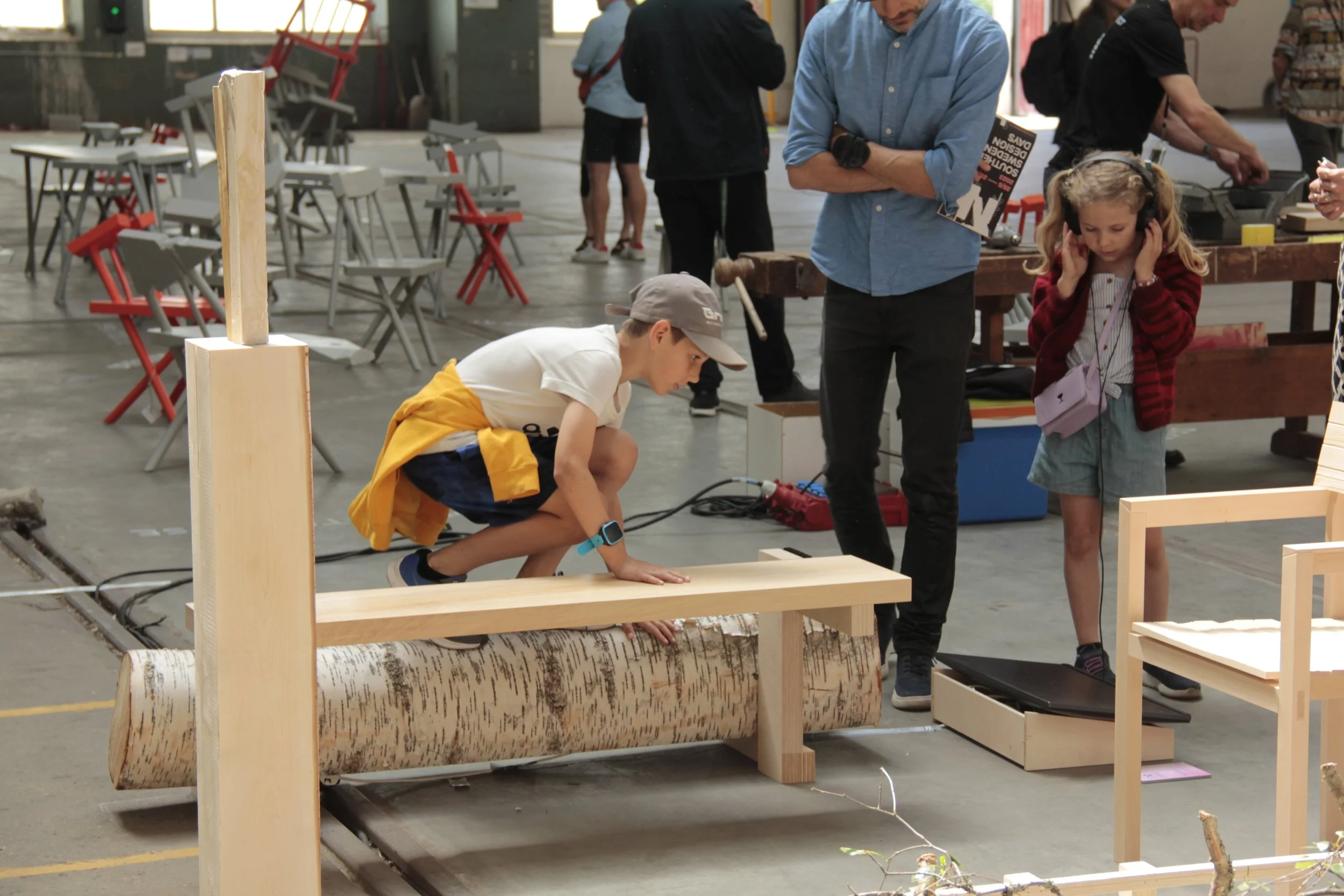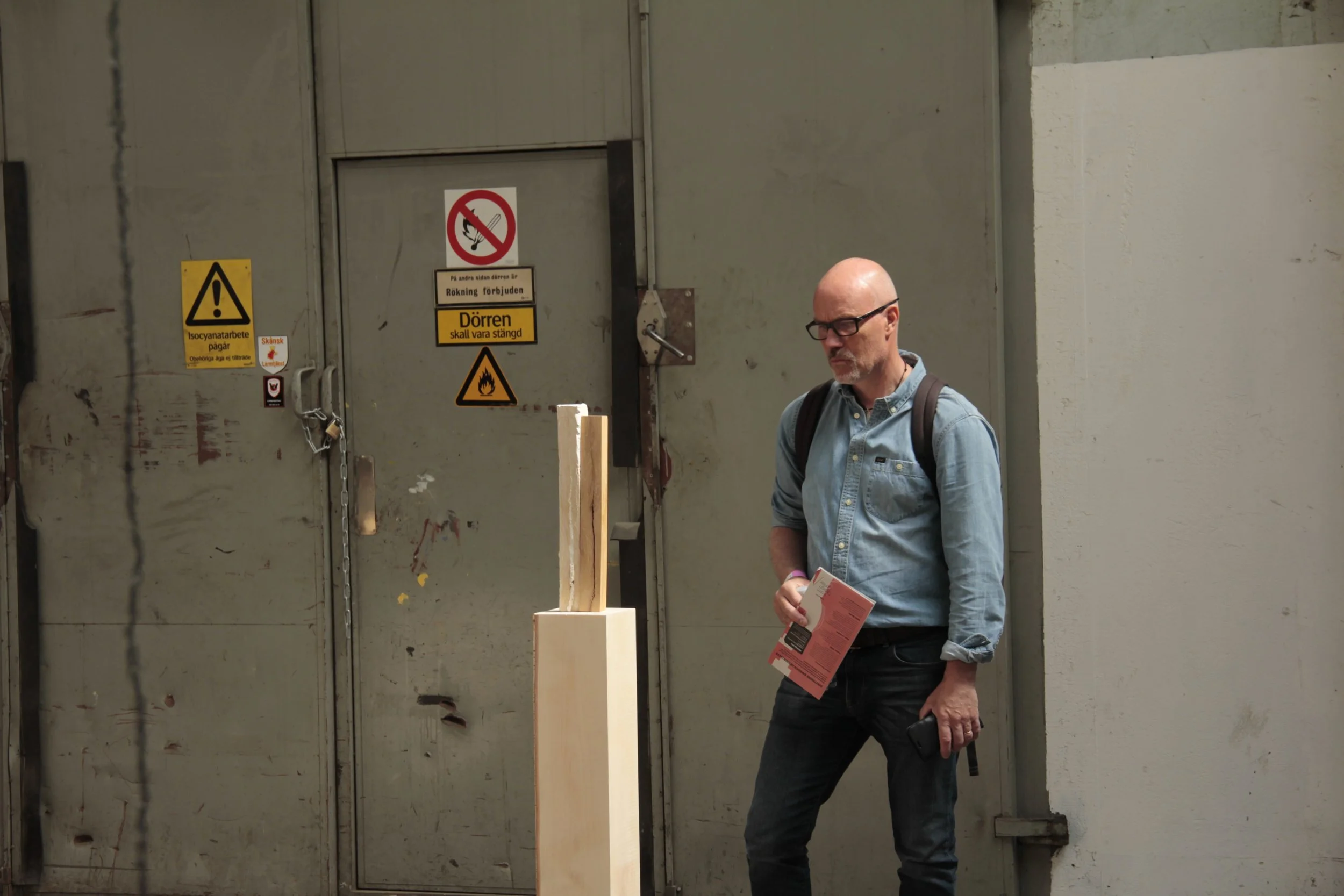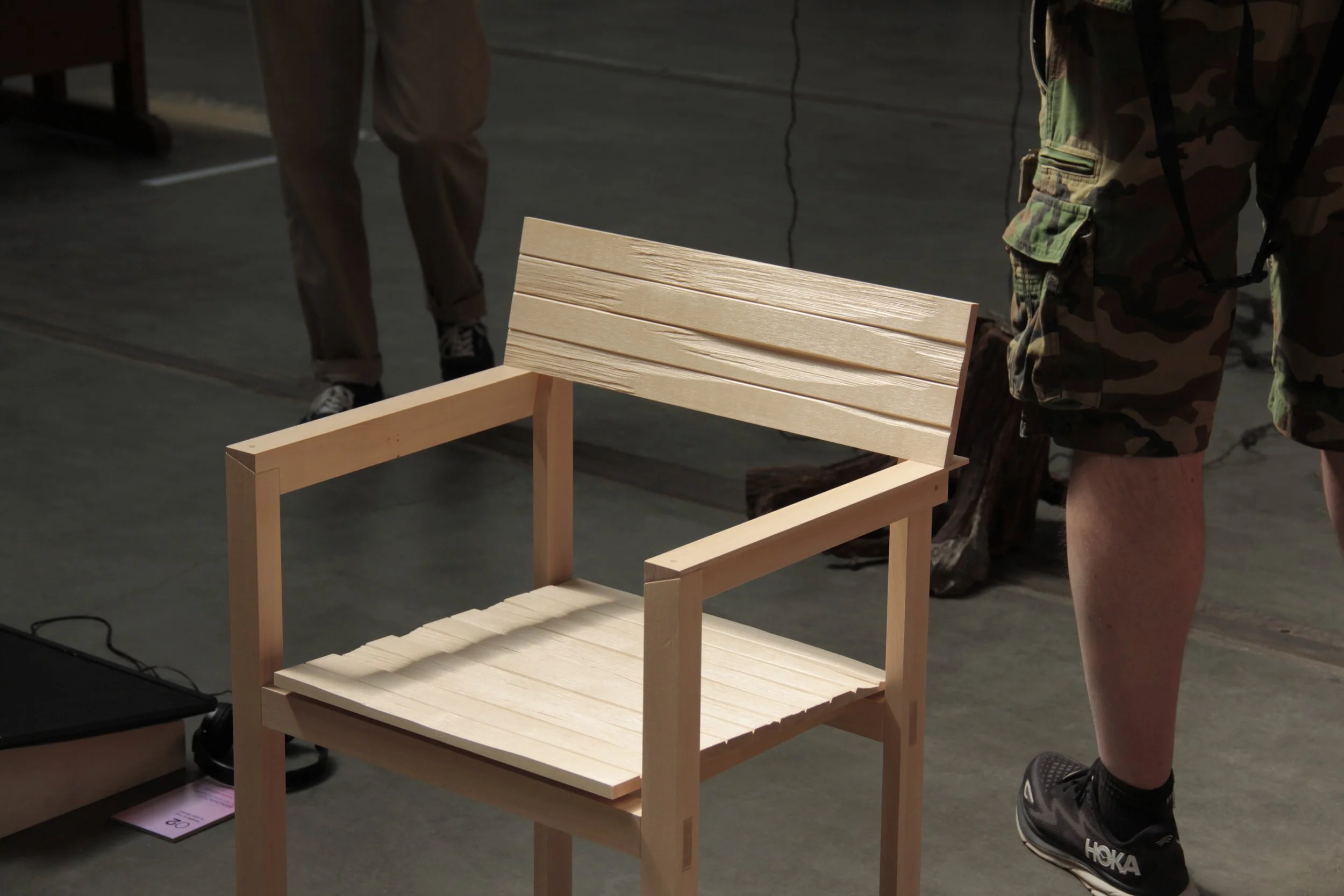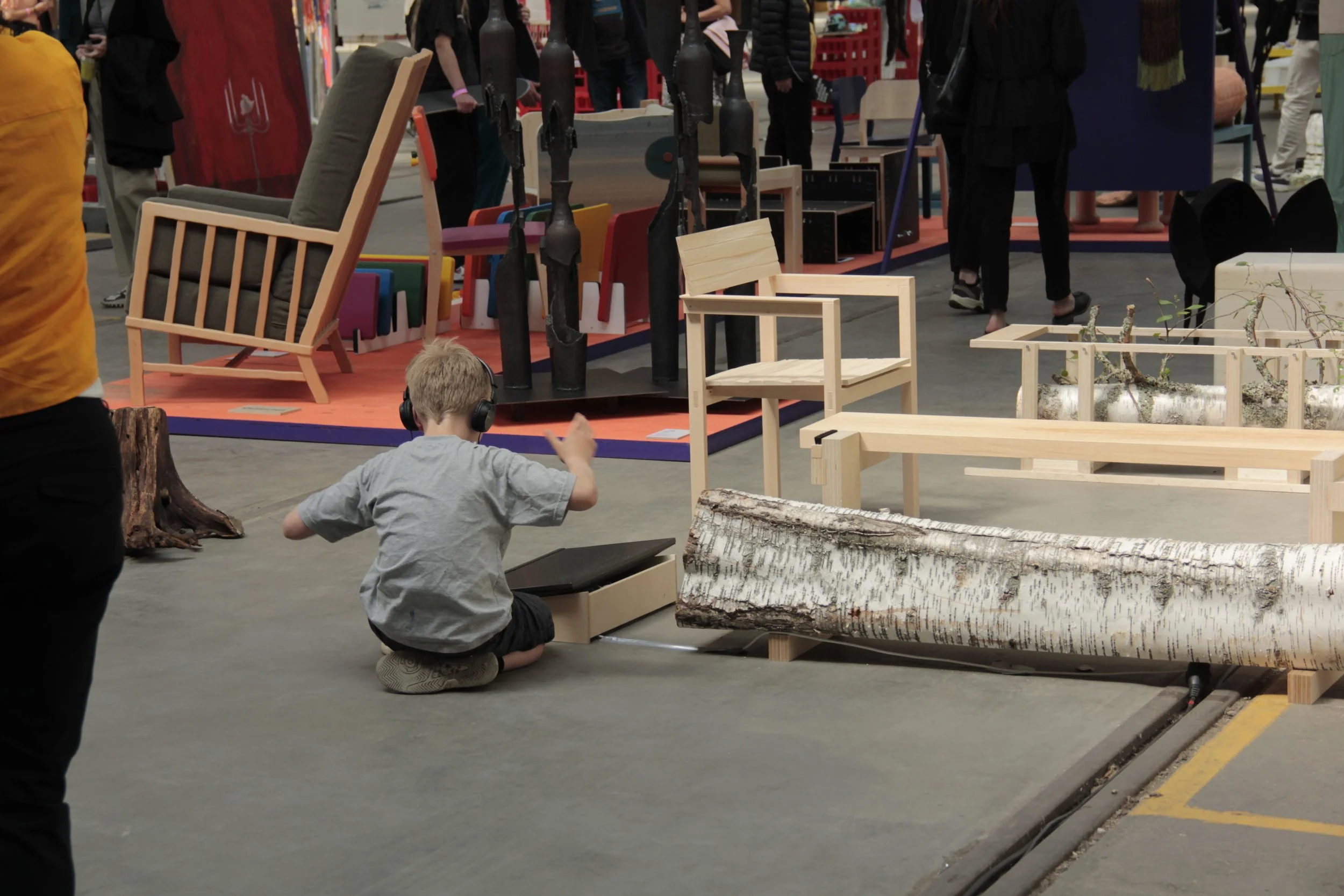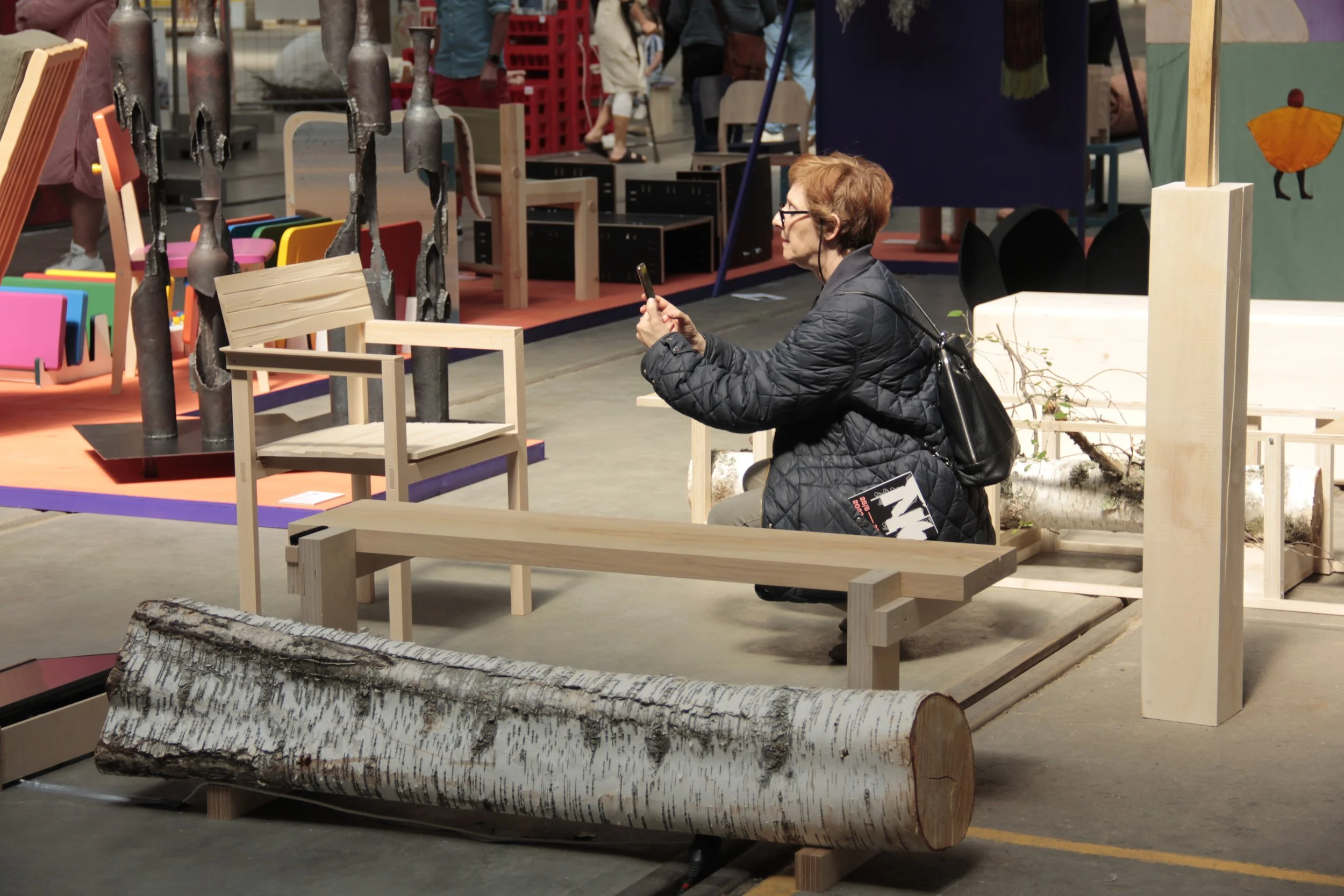Where is the plank from?
For Banchao Lu, Wood is not merely material, it comes from the tree. The vitality of wood is the beauty, paid by the death of the tree, that existed even before his work was created. his task was therefore not to create it, but to present it wherever it was.
After handling massive planks in the wood workshop, Lu felt a potential threat from the plank, a denatured form given by the wood industry which attempted to plasticise the vitality of wood, he could not perceive the life relationship between the tree and the plank anymore. Through his experimental furniture making, Lu was inspired by the Japanese artistic movement, MONO-HA, bringing back the properties of wood on the stage, which the plank stood, bare and undisguised, wood fibres, the vitality of wood, the death of the tree and so on. Lu tried to invite his audiences to awareness “things” around things, finding beauty in between things,
Eventually, Lu is promoting a sustainable view of wood consumption whether makers or buyers, with gratitude for wood, building or using wooden furniture in a long-term way.
Continuerà a crescere tranne che in quelpunto (1968–2003), Giuseppe Penone, tree (Ailanthus altissima) and bronze.
How to see
People sometimes think that art is a problem of perspective, of how things are seen, but to understand what you see, you need to touch.
If you do not walk, you do not have any ideas of the distance between two points. it is only afterwards that you have the experience of the space through your body.
Then you know what the distance is from seeing it, from your view, and you understand the space and you understand the form, and you understand whether the material is hard or soft, and so on.
— Giuseppe Penone
Practice of 'how to see a chair', Banchao Lu, 2023
Seeing a chair
To understand what you see, you need to activate your body, it takes time, and movements. Like all those black chairs, they look exactly the same, after elevating the chair for a while, I wish you gain your own Experience of seeing this chair. by sort of suffering.
— Banchao Lu
Literally, it is translated as ‘School of Things’, an artistic movement happened around 1970 in Japan.
A group of artists started using both natural and man-made materials, beams, stone, glass in their work. They are aiming to challenge the preexisted perception of art and products produced by the industrial society in that moment. Their task was simply to bring existed ‘things’ back together, as far as possible in an unaltered state, allowing the juxtaposed materials to speak for themselves.
From my view, mono-ha is a school of learning to ‘seeing’ things。Instead of creating. It is a certain ability of perceiving the beauty of position, be aware of what is happening, in between. It is about embracing the beauty in nothingness, a spiritual meditation. To construct sort of ritual experience between body and things as human being。
Mono-Ha
Cut-off (hang), 1969-1986, Katsuro Yoshida.
Mono-Ha: Table and vase
Few mono-ha experiments I did with my friends Paul Garrigues in Netherlands, Eindhoven, about how to ‘seeing’ a table.
What is a table? apart of a general platform, table could be an action, elevating, so I perceive there is an existed harmonious surface in the air,table was constructed to be able to catch up that level, eventually, all elements around the table were in an unaltered state. Including body around table. Then, a table was done.
The second mono-ha experiment was about presenting the spontaneous space below a table, when the surface was elevating, Throughout digging and stamping spontaneously
From mono-ha experiments of seeing things, I realized that it is more about how I position myself into seeing. Table could be an action, or a space happening as well. I am seeing the beauty instead of creating. Beauty has been existing before my creation.
So I start willing to spend time on seeing things when I am creating. I start believing the energy of seeing into action, position…
Where is the plank from ?
It is a drawing I made in the wood workshop during my exchange in Netherlands, one day, I was picking some planks to make something, but I did not know what to make, without any plans, I stuck in front of the plank shelf. Suddenly, I saw a very clean grain from one of planks, it is beautiful, I felt I saw the tree behind that, I was wondering where is that beauty from, is it from the tree? Also, I realized that I never saw a plank from the tree perspective before.
I reflected that plank is a such strong denatured form, between tree and wood, trying to delete the life connection between tree and wood, same as the meat ball between animal and meat. I could not perceive the between anymore between tree and wood. Animal and meat.
Where is the tree ?
I went to the forest, I saw the tree, it is a very complicated form that I only can see, but I could not remember.
I can only remember where it is after removing the tree. which it is the position.
I am trying to understand the importance of the position of a tree by wrapping toilet paper on it, in order to remember the form of the tree, It took 3 hours to finish a whole roll.
Where is the wood ?
I decided to change the form of tree into a cuboid, which is about making a denatured from. In my initial ideas, I thought now wood cuboid became copyable as a mold. Then, I can produce the form of the tree. However, when I tried to copy that form with plaster after that, I saw that the actual form changed on the plaster, because the space inside the log changed after losing attention by cutting, I am seeing the wood with certain attention inside in that moment.
I realized that I am seeing the between between tree and wood, it’s invisible, it is the tension, vitality, not planks anymore, it is not a form which I could remember.
Where is the plank from ?
Where is the furniture going ?

Dals Långed, Göteborg, Swden
Dals Långed is where I live and study in Sweden,surrounded by the beautiful nature, forests lake and so on…
2023,Master graduation exhibition MAXI,Dals Långed,Sweden
Wood cuboid became a bacteria with life, infect the plaster with color and grain, even the shape, as a non- living material. Plaster also gained certain life from the wood.
planks, wood, tree, shelf
“I feel being the tree when I brush the tree” - Banchao Lu
“Consuming less, using things longer and being frugal about recycling materials.” - victor papanek
2023,Southern Sweden Design Days,Malmö,Sweden



